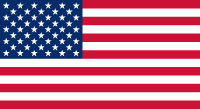
When you’re stocking your game room, you’re more than likely going to gravitate toward the old staples, such as ping pong, pool, darts, foosball, and table hockey. But there’s another game out there that’s actually just as much of a classic, if not more so, but doesn’t necessarily get the same kind of consideration in game rooms across the country — shuffleboard.
But what is shuffleboard?
A shuffleboard is a table used to play the game of shuffleboard, which consists of players using cues or their hands to push weighted discs to an area on the table marked for scoring.
This simple but endlessly entertaining game has a history that dates all the way back to 15th-century England. Over the years, shuffleboard has only become more accessible and fun to play in its modern iteration. To get you better acquainted with this game, let’s take a look at its history, the shuffleboard rules, and some tips on what to look for in a shuffleboard table.
What Is Shuffleboard? A Brief History
Although shuffleboard does have its roots in 15th-century England, the game was not called shuffleboard back then; it was called shove groat.
The game of shove groat involves sliding a coin (called a groat) across a table in order to land it at the desired destination. That is the basic concept behind shuffleboard, which is what shove groat would evolve into over centuries. Matches of the game happened between everyone from the American founding fathers to Hollywood movie stars, all while never straying too far from its proletariat roots.
Today the game is popular enough to have its own international association, the International Shuffleboard Association (ISA), and even its own Hall of Fame.
The Rules of Shuffleboard
Shuffleboard is a fairly simple game with a variety of iterations. It’s played on a long rectangular table with gutters on either end and along the sides. Players take turns sliding weighted pucks from one end of the table to the other. The goal is to get the pucks as far as they can without landing them in the gutter.
Shuffleboard tables have markings on them to denote the score you’ll receive if you’re able to land your puck in that area. Points range from 1 to 3, and games are played until someone reaches 51 points.
Those are the basic rules that apply to just about any iteration of the game. However, there are a variety of different styles of games you can play.
What to Look for When Buying a Shuffleboard Table
Shuffleboard may be simple, but there is a distinct difference in the quality of entertainment you are likely to get from a low-quality table compared to a high-quality one. Here’s what to look for when buying a shuffleboard table.
The Fit
Even the most beautifully crafted shuffleboard table on the planet won’t be much fun if you don’t have enough room to enjoy it. The general range of shuffleboard table sizes is about 9 feet to 22 feet. You should take measurements of the area you’re looking to place your table and make sure to account for the extra space you need for a range of motion while playing.
The Width
The width of the playing surface is crucial because it can be detrimental to gameplay if you opt for one that’s too narrow. You should look for something at least 18 inches wide but preferably a bit wider than that.
The Quality
The quality of your shuffleboard table is another important thing to consider. It’s similar to a pool table. If you have ever played on a cheap pool table, you know just how important quality is. You don’t necessarily have to buy a super expensive shuffleboard, but you should also avoid going with the very inexpensive ones because it’s often not worth the money saved. Additionally, you’ll want your shuffleboard table to last for years of fun.
Make Sure to Have Fun
Trust us when we say that this game can get incredibly competitive, and it may be easy to go off the deep end trying to beat anyone who challenges you. But what is shuffleboard if not a fun game for relaxation and recreation? Sure, get competitive, but make sure it’s all in good fun.







 Shop now. Pay over time with affirm
Shop now. Pay over time with affirm